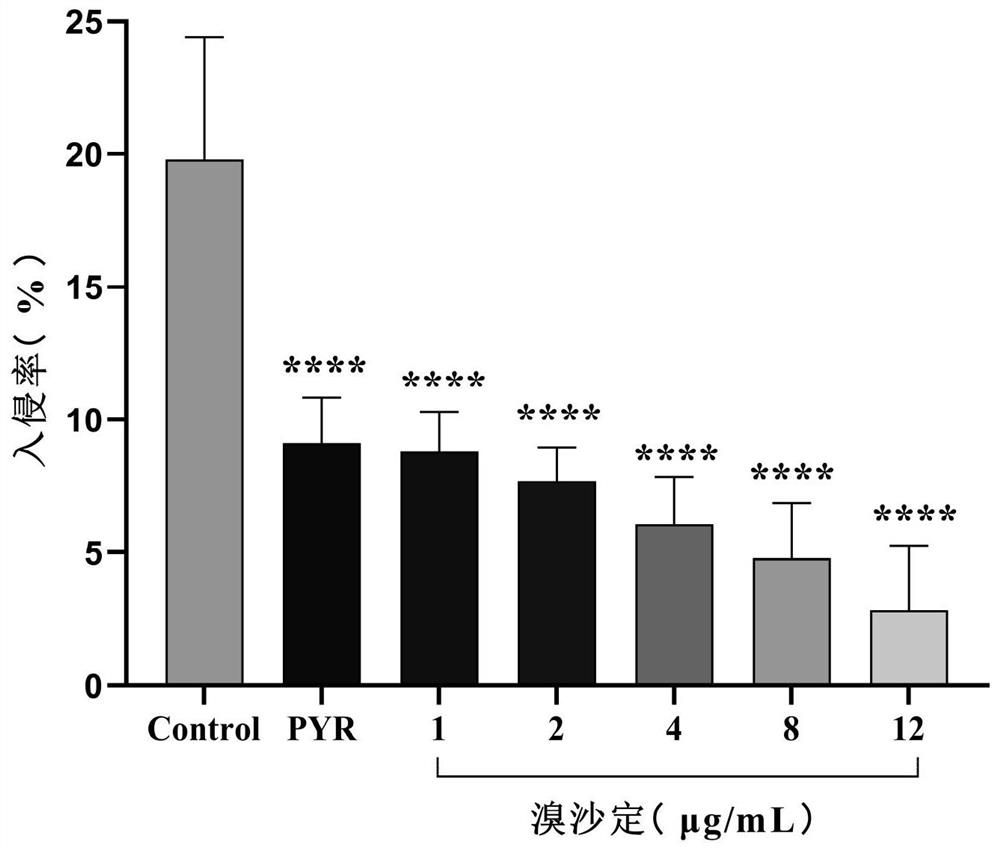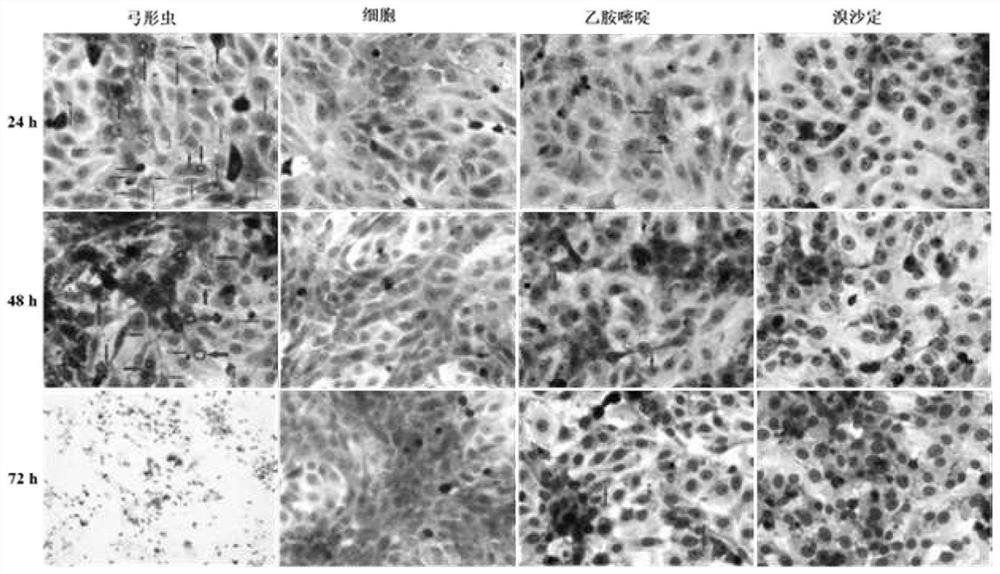Application of quinoline compound broxaldine in inhibition of toxoplasma gondii activity
A technology of broxadin and compounds, applied in the application field of quinoline compound broxadin inhibiting the activity of Toxoplasma gondii
- Summary
- Abstract
- Description
- Claims
- Application Information
AI Technical Summary
Problems solved by technology
Method used
Image
Examples
Embodiment 1
[0028] A kind of quinoline compound broxadin is applied to the inhibition of Toxoplasma gondii RH-2F tachyzoites, and is verified by the following methods:
[0029] Use biochemiluminescent method to measure the inhibitory effect of broxadin to Toxoplasma gondii RH-2F tachyzoites, comprising the following steps:
[0030] Toxoplasma gondii type I virulent strain RH-2F expressing β-galactosidase was selected for growth inhibition assay. Harvest fresh and vigorous RH-2F tachyzoites from Vero cells, count them with a hemocytometer, and adjust the concentration of RH-2F to 1×105 / mL. Each concentration of broxadin was prepared in this way, and added to a white 96-well plate, 0.25% DMSO was used as the control group, and the group containing only the culture medium was used as the blank group. Add Beta- As for the detection reagent, after 30 minutes of action, the luminescence value was detected in a photometer to calculate the survival rate of RH-2F.
[0031] result:
[0032] Th...
Embodiment 2
[0034] The anti-invasion application of a quinoline compound broxadin to Toxoplasma gondii RH is verified by the following method: use indirect immunofluorescence to measure the anti-invasion effect of broxadin on toxoplasma gondii RH, comprising the following steps:
[0035] 1 × 105 / mL RH tachyzoites containing various concentrations of active compounds were inoculated in monolayer Vero cells after being treated in an incubator for 1 h, 0.25% DMSO was used as a negative control group, and 10 μg / mL pyrimethamine (PYR ) as a positive control. After 2 hours of invasion, try to wash away the non-invading tachyzoites with PBS. After fixation, antigen retrieval and blocking, the extracellular T. gondii was labeled with mouse anti-T. gondii monoclonal antibody, and the secondary antibody was goat anti-mouse IgG H&L (Alexa 647), after permeabilization with 0.2% TritonX-100, the rabbit anti-toxoplasma polyclonal antibody was selected to label the intracellular Toxoplasma gondii, and...
Embodiment 3
[0040] The anti-proliferation application of a quinoline compound broxadin to RH or Pru in Toxoplasma gondii cells is verified by the following method, using Giemsa staining to measure the anti-proliferation effect of broxadin on intracellular RH and Pru, including the following steps :
[0041] Inoculate Vero cells in a 6-well plate. When the cell monolayer is formed, inoculate RH and Pru tachyzoites. The inoculation amount of RH tachyzoites is 2×105 / well, and the inoculation amount of Pru tachyzoites is 3×105 / well. After culturing for 8 hours, discard the culture medium, thoroughly wash with PBS to remove uninfected parasites, add broxadin 4 μg / mL medium for incubation, and set up negative control group (Toxoplasma gondii RH) and blank control group (cell ) and positive control group (pyrimethamine 10 μg / mL). After incubation for 24h, 48h and 72h, observe the growth status of the parasites and the state of the cells, take them out, stain them with Giemsa, and take picture...
PUM
 Login to View More
Login to View More Abstract
Description
Claims
Application Information
 Login to View More
Login to View More - Generate Ideas
- Intellectual Property
- Life Sciences
- Materials
- Tech Scout
- Unparalleled Data Quality
- Higher Quality Content
- 60% Fewer Hallucinations
Browse by: Latest US Patents, China's latest patents, Technical Efficacy Thesaurus, Application Domain, Technology Topic, Popular Technical Reports.
© 2025 PatSnap. All rights reserved.Legal|Privacy policy|Modern Slavery Act Transparency Statement|Sitemap|About US| Contact US: help@patsnap.com



